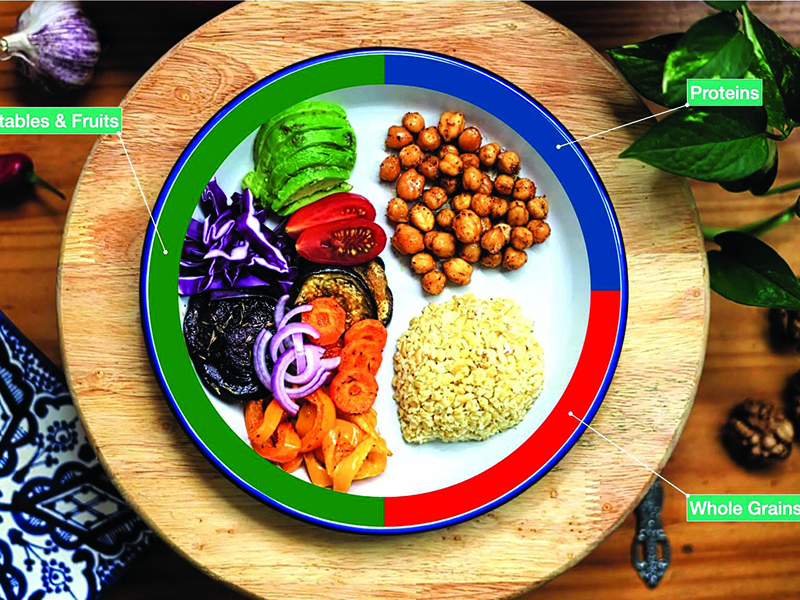
Dr. Snigdha Samanta
Dr. Snigdha Samanta is a consultant neonatologist and pediatrician at Rani Hospital and Research Centre for Children, Ranchi
The Nelson Textbook of Pediatrics and Indian Academy of Pediatrics guidelines stress the importance of educating adolescents about appropriate food portion sizes to maintain healthy weight and ensure overall well-being
Adolescence is a time when children become overly obsessed with their physical attributes and tend to resort to fad diets to achieve the model body image. Therefore, it’s important that parents encourage teenage children to develop a positive relationship with food for long-term good health and to prevent eating disorders such as bulimia and anorexia.
This can be done by carefully planning their diets to meet nutritional needs and educating them about controlling meal portions to encourage healthy eating habits, particularly in urban environments where foods are often high in calories yet, but low in nutrition. The Nelson Textbook of Pediatrics and guidelines from the Indian Academy of Pediatrics (IAP) stress the importance of educating adolescents about appropriate food portions to maintain a healthy weight and ensure overall well-being. Here are some effective strategies:
 Nutritional needs
Nutritional needs
Growth spurts. Adolescents experience rapid growth during puberty and a spurt in nutritional needs. While they may feel more peckish during this period, it’s important to differentiate between genuine hunger and emotional and habitual eating. For example, when a child is thirsty or bored, she may interpret it as a hunger signal.
Balanced macronutrients. Prepare balanced meals with appropriate portions of carbohydrates, proteins, and healthy fats. Educate teens about how these macronutrients contribute to overall health.
Use visual cues for portion sizes
Plate method. Teach teens the ‘plate’ method where half the plate is filled with vegetables, a quarter with lean protein (chicken, fish, tofu), and a quarter with whole grains (rice, roti, quinoa).
Hand portioning. Use hand sizes as guides — such as a fist for vegetables and fruits, a palm for protein, and a cupped hand for carbohydrates.
Mindful eating practices
Slow down. Encourage eating slowly and savoring each bite. This enables teens to gauge when they are full, preventing overeating.
Avoid distractions. Ensure that meals are consumed without distractions such as phones, TV, or computer screens. This makes children more attuned to hunger and fullness cues.
Healthy meal timing
Regular meals. Prescribe regular meal times (breakfast, lunch, and dinner) with healthy snacks in between. Skipping meals leads to overeating later.
Healthy snacks. Encourage healthy snacks like nuts, yogurt, fruits rather than packaged, processed options that lead to overconsumption.
 Healthy food choices
Healthy food choices
Portion-controlled foods. Instead of large, calorie-rich portions, encourage greater share of fruits, vegetables, and whole grains that are satiating but low in calories.
Limit sugary and processed foods. Teach moderation in consuming high-calorie, low-nutrient foods like chips, sweets, and sugar drinks. These should be occasional treats rather than everyday fare.
Nutrient-rich foods. During growth spurts, ensure that meals contain nutrient-rich foods that provide vitamins and minerals. Such as vegetables, fruits, whole grains, and proteins, rather than empty-calorie foods that don’t contribute to physical growth and development.
Model healthy eating behavior
Lead by example. Practice portion control and mindful eating as a parent. Adolescents often adopt habits by observing their parents, so modeling healthy eating behavior at home is crucial. Stop buying packaged foods and make it a practice to read food labels.
Appropriate serving sizes
Family meals. Serve food in family-style portions rather than individual plates. This allows teenagers to control how much they serve themselves, making it easier to manage portion sizes. Focus on home-cooked rather than readily packaged food.
Pre-portioned snacks. Instead of large packets of snacks, offer pre-portioned servings to prevent overeating. Fruits or nuts in moderation are good snacking options.
Emotional eating
Encourage teenage children to identify situations when they eat because of stress, boredom, or emotion rather than hunger. Teach them to find healthier ways to cope with negative emotions, such as physical exercise or talking to someone.
By promoting food portion control — using visual cues, emphasizing healthy eating choices, and modeling positive eating habits — parents can guide their teens to adopt a healthy lifestyle. Nutritional literacy thus acquired, will serve them well as they progress into adulthood.
Also Read: Experts seek implementation of NCDs control plan, better labelling of food targeting kids























